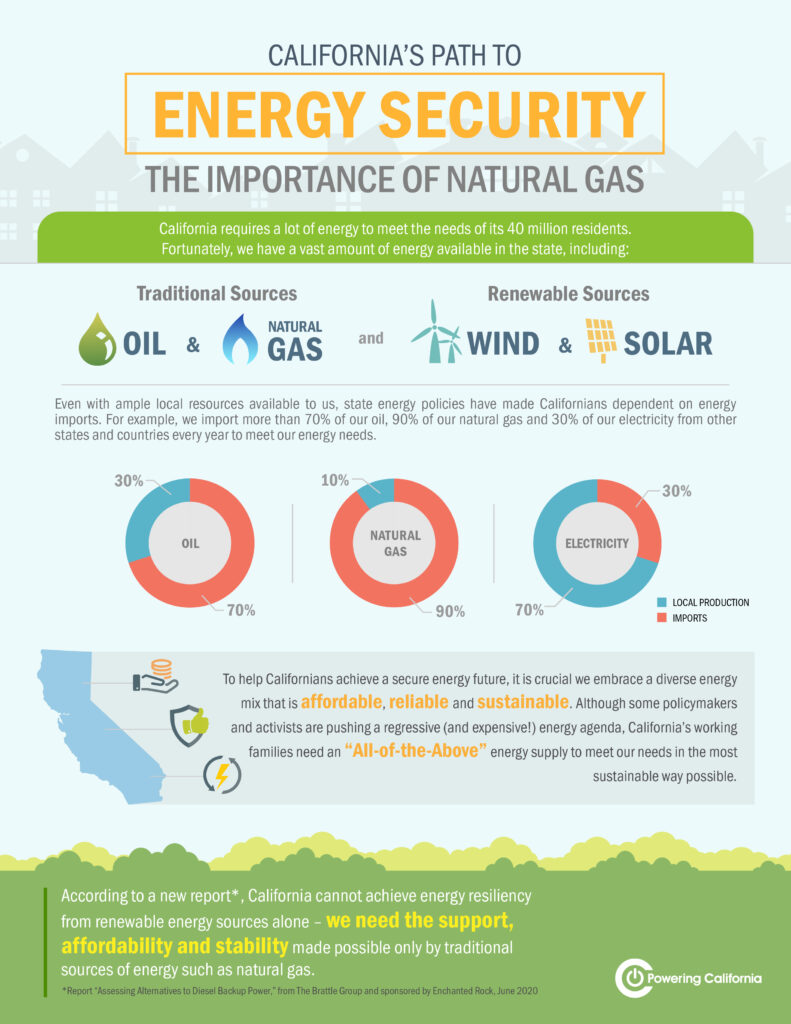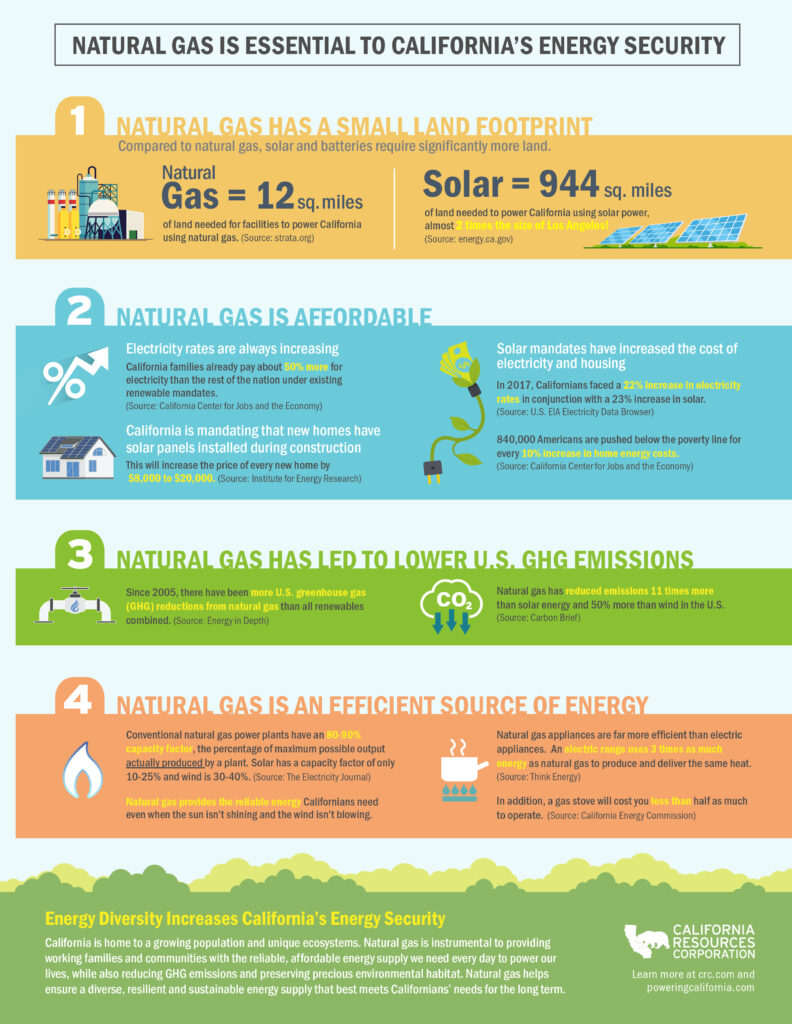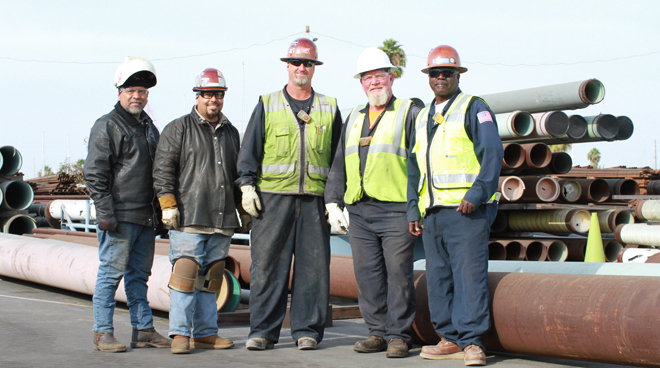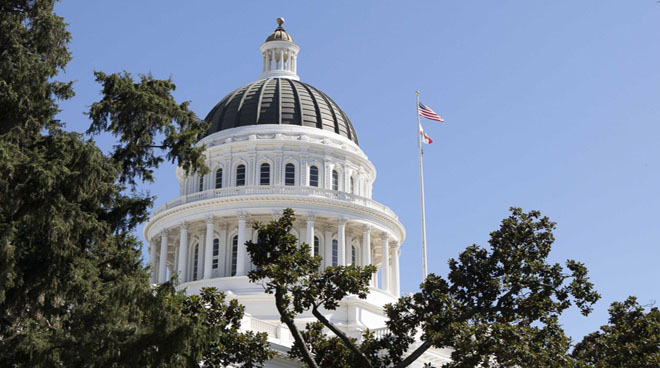California’s Path to Energy Security Requires Natural Gas
California requires a lot of energy to meet the needs of its 40 million residents, not only to keep the lights on but also to charge our electronic devices and keep our air conditioners running. Electricity blackouts are terrible at any time, but during a heat wave when people are forced to stay indoors, they are a threat to people’s health. As millions of Californians are finding out this week, reliable energy is not something to take for granted.
This past Friday, the California Independent System Operator (CAISO), which manages the state’s power grid, declared a high-level emergency and ordered investor-owned utilities to reduce power usage. However, even with those efforts, power reserves fell to dangerous levels and power was cut off to people across the state that evening. The potential for these blackouts will continue for many days.
CAISO, California’s public and private utilities, and businesses like California Resources Corporation (CRC) have stepped up to increase power generation from natural gas and to curtail industrial usage of electricity to help extend the power supply for homes, hospitals and communities. Although CRC is already a net supplier of electricity to the grid through its 550-megawatt (MW) Elk Hills Power Plant, an idle cogeneration plant was restarted to generate 23 MW of additional electricity. CRC further reduced the company’s electricity demand from the grid by about 100 MW during peak hours by temporarily shutting in certain wells and operations. CRC also temporarily curtailed steam production at one field, enabling additional supply of natural gas to local power plants sufficient to produce another 100 MW or more of electricity for the grid.
Californians are coming together to try to defuse this current shortage but, as Governor Newsom has noted, ceasing industrial production and facing widespread outages is not acceptable in the world’s fifth-largest economy. The Governor has tasked the state’s energy regulators to ensure that California consumers and businesses don’t face continuing rolling blackouts. To satisfy the Governor’s order, these agencies will need to consider why California cannot keep the power on when we need it most.
First, the Golden State is rushing to meet its many self-imposed mandates including: to shut down multiple coastal natural gas power plants and California’s last nuclear power plant by mid-decade; to require utilities to supply 60% of retail electricity from renewables by 2030 and 100% by 2045; and to mandate increasing electrification of passenger automobiles and even heavy-duty trucks. The state agencies pursuing these single-minded efforts, while well-intentioned to reduce emissions of greenhouse gas, have relegated resource adequacy, reliability and resilience to an after-thought and leaving Californians paying electricity rates that are double the national average.
Second, it is important to know that during peak daylight hours, California can produce a lot of solar energy, so much in fact that power generators may be ordered or even paid to cut their production so the grid doesn’t overload. But when the sun sets, solar energy plunges, reducing electricity supplies just as evening demand increases. While energy storage has future promise, California currently has only about 200 MW of storage statewide, which does not prevent outages. California also imports a third of its electricity, but when the entire western region is experiencing a heat wave there is less electricity available for California. That is what happened this past weekend. The reality is that, because renewables are intermittent, the grid is more dependent than ever on natural gas to ramp up when there are clouds, from dusk through the night, and when the wind does not blow.
While some agencies have sought to force premature closure of natural gas power plants, the Governor has highlighted the need to ensure that our communities have an ample energy supply on demand. Fortunately, California has many underutilized natural gas plants that can generate power around the clock, and these plants could rapidly restore our reliability and reduce our dependence on imported electricity. For example, a 10-year-old natural gas power plant in the Inland Empire is slated to be decommissioned this year – decades earlier than its productive lifespan. The combination of 100% renewable mandates and premature plant decommissioning leaves Californians exposed to ever higher electricity rates with decreasing reliability.
This is not a sustainable approach. Californians need energy security – access to safe, reliable and affordable energy to maintain a high quality of life for their families. As California goes through this period of energy insecurity, it is crucial for the state to embrace an “All-of-the-Above” energy supply to ensure resiliency – one that includes reliable traditional sources such as natural gas, renewables such as solar and wind, and the development of longer-term energy storage – to meet our needs in the most affordable and sustainable way possible.
Learn more about California’s path to energy security and the importance of natural gas by viewing our infographic below.



